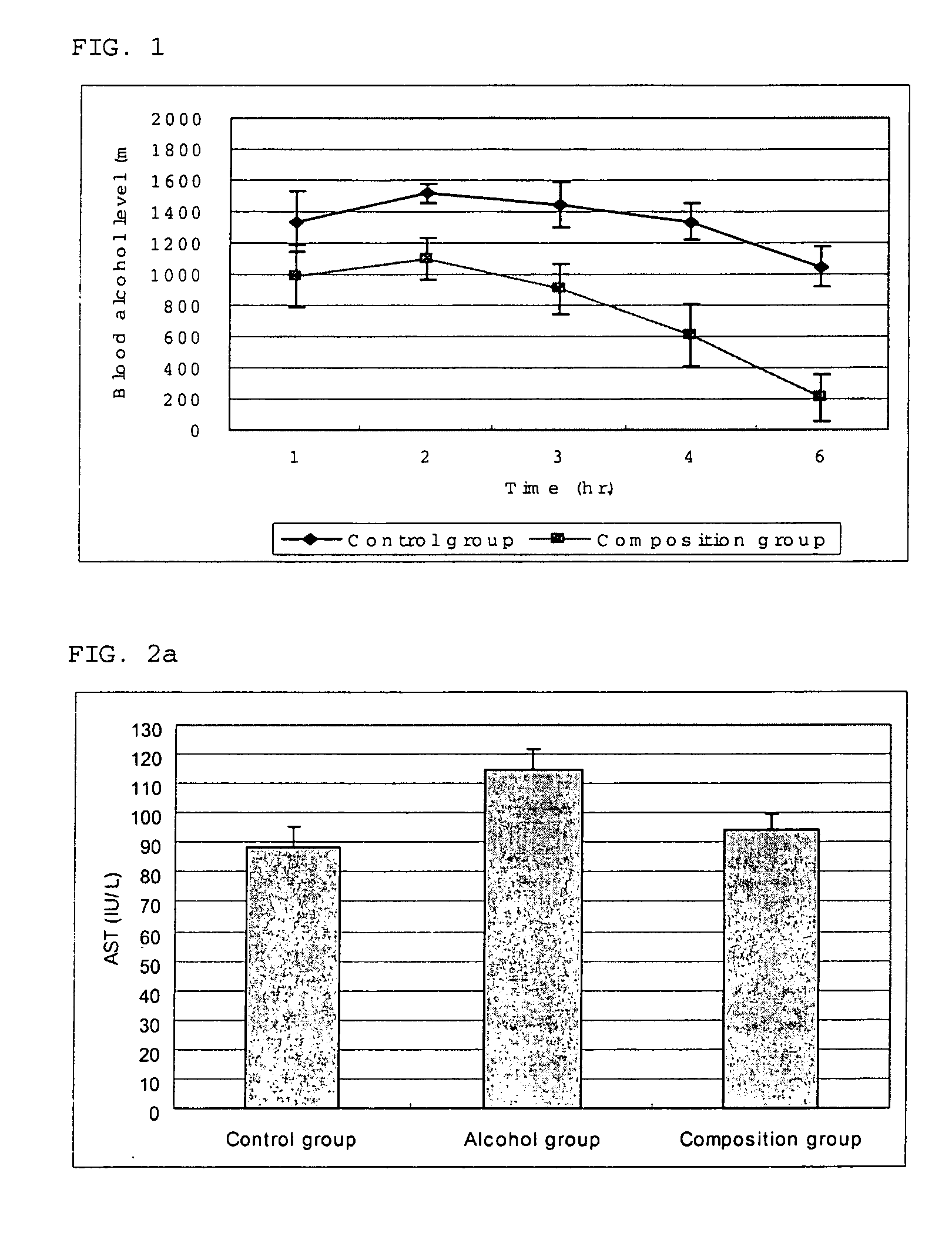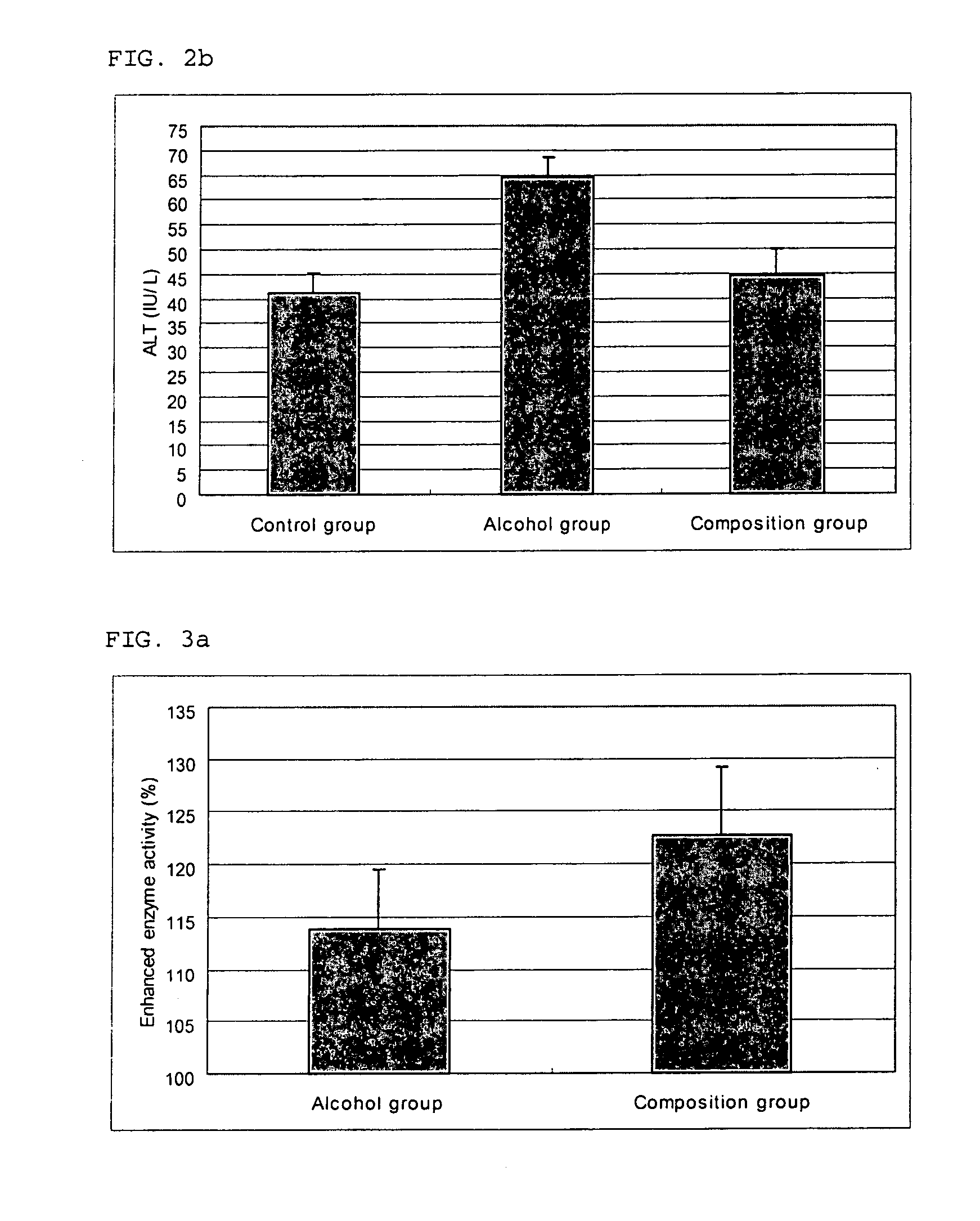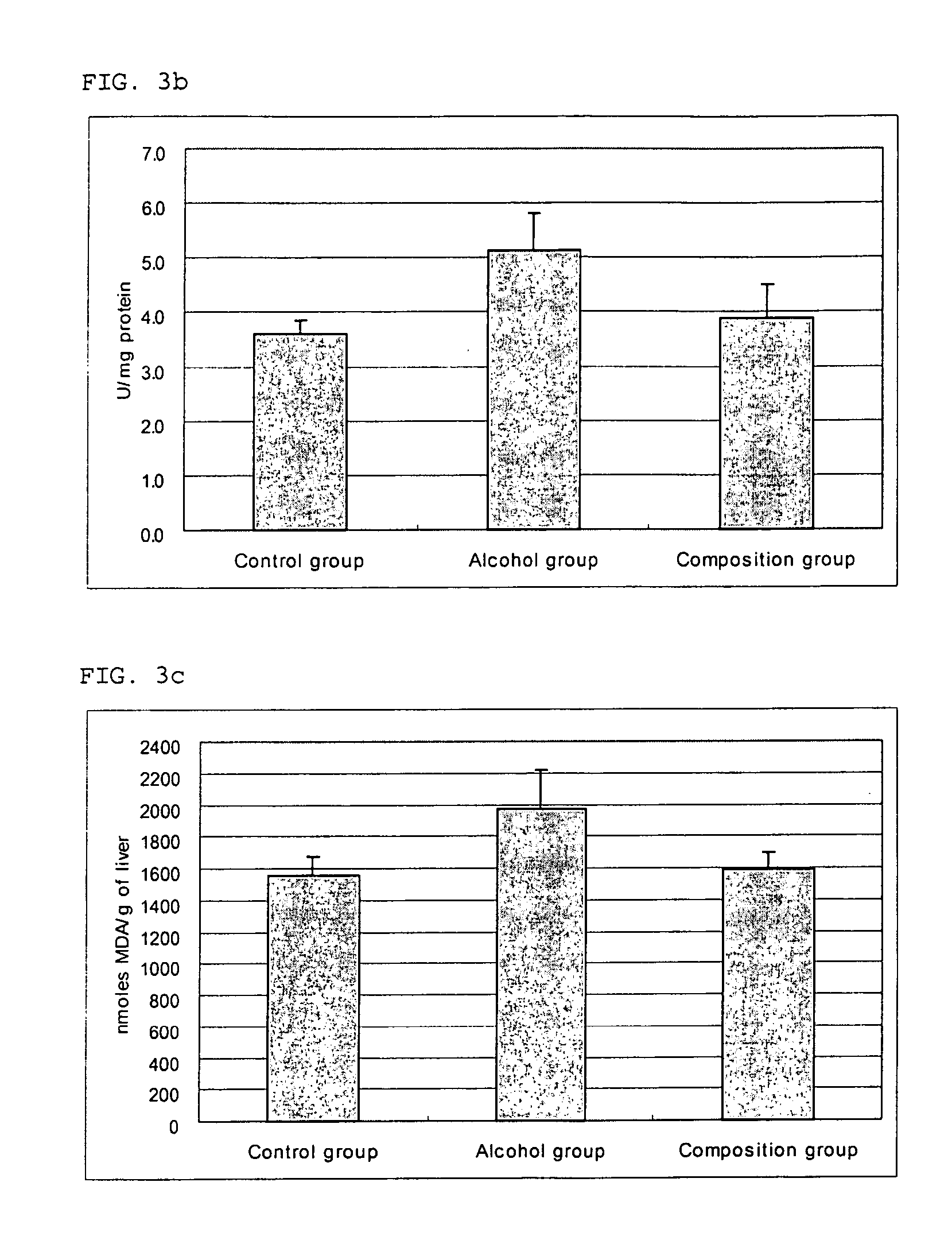Composition for the improvement of liver function, the reduction of serum ethanol level and antioxidant activity enhancement
- Summary
- Abstract
- Description
- Claims
- Application Information
AI Technical Summary
Benefits of technology
Problems solved by technology
Method used
Image
Examples
example 1
Preparation of the Composition for Use in Liver Function Improvement, Blood Alcohol Level Reduction and In-Vivo Antioxidant Activity Enhancement
[0070]Lactobacillus brevis HY7401 was cultured at 37° C. for about 16 hours in broth containing proteose peptone #3, yeast extract, beef extract, and glucose and the culture medium was centrifuged to harvest the bacteria which was then washed with sterilized physiological saline and suspended in sterile milk. Lyophilization of the suspension gave a freeze-dried powder containing about 1011 cfu per g.
[0071]Lactobacillus fermentum CS332 was also cultured in the same manner as Lactobacillus brevis HY7401, and a freeze-dried powder containing about 1011 cfu per g was obtained.
[0072]Lactobacillus acidophilus CSG was also cultured in the same manner as in Lactobacillus brevis HY7401 and a freeze-dried powder containing about 1011 cfu per g was obtained.
[0073]Bifidobacterium longum HY8001 was cultured in a broth containing proteose peptone #3, ...
example 2
Preparation of Fermented Dairy Food Based on the Composition for Liver Function Improvement, Blood Alcohol Level Reduction and In-Vivo Antioxidant Activity Enhancement
[0085] A fermented dairy food comprising the composition for liver function improvement, blood alcohol level reduction and in-vivo antioxidant activity enhancement and a mixed fruit syrup was prepared as follows.
[0086] First, a lactic acid culture was prepared. In this regard, about 95.36% by weight of raw milk was mixed with about 4.6% by weight of skim milk powder (or mixed dried milk) with stirring to give a mixture which ranged in density at 15° C. from about 1.0473 to about 1.0475, in titrable acidity from about 0.200 to 0.220%, in pH from about 6.65 to about 6.70, and in Brix° at 20° C. from about 16.3 to about 16.5%. Subsequently, the mixture was subjected to UHT treatment (for 2 sec at 135° C.) and cooled to 40° C., followed by inoculation with Streptococcus thermophilus and lactase (Valley laboratory, USA) i...
example 3
Preparation of Functional Beverage Based on the Composition for Liver Function Improvement, Blood Alcohol Level Reduction and In-Vivo Antioxidant Activity Enhancement
[0089] A functional beverage composed of the composition for liver function improvement, blood alcohol level reduction and in-vivo antioxidant activity enhancement and a mixed fruit syrup was prepared as follows.
[0090] The mixed fruit syrup was obtained by mixing about 10˜15% by weight of high fructose corn syrup, about 3˜5% by weight of white sugar, about 3˜5% by weight of brown sugar, about 10˜15% by weight of a mixed juice extract having 56 Brix° out 0.1˜1.0% by weight of pectin, about 0.05˜0.15% by weight of a fresh fruit mix essence and about 58.85˜73.85% by weight of purified water at about 30˜35° C. with stirring, conducting UHT treatment (135° C., 2 sec) for sterilization, and cooling the mixture.
[0091] about 43.0˜59.5% by weight of this mixed fruit syrup, about 5.5˜7.0% by weight of the composition useful fo...
PUM
| Property | Measurement | Unit |
|---|---|---|
| Fraction | aaaaa | aaaaa |
| Fraction | aaaaa | aaaaa |
| Fraction | aaaaa | aaaaa |
Abstract
Description
Claims
Application Information
 Login to View More
Login to View More - R&D
- Intellectual Property
- Life Sciences
- Materials
- Tech Scout
- Unparalleled Data Quality
- Higher Quality Content
- 60% Fewer Hallucinations
Browse by: Latest US Patents, China's latest patents, Technical Efficacy Thesaurus, Application Domain, Technology Topic, Popular Technical Reports.
© 2025 PatSnap. All rights reserved.Legal|Privacy policy|Modern Slavery Act Transparency Statement|Sitemap|About US| Contact US: help@patsnap.com



